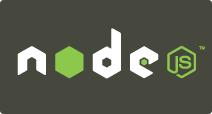Pages with tag OpenAPI
- Autogenerating TypeScript types and data validation for OpenAPI Schemas
- Building Node.js REST API servers from OpenAPI specifications
- Create a Spring Boot REST API using Swagger, OpenAPI, to "Generate Swagger OpenAPI REST API documentation for Spring Boot application"
- Displaying Swagger UI in an HTML page without using server-side services
- Easily edit or view OpenAPI 3 API specifications using free tools









